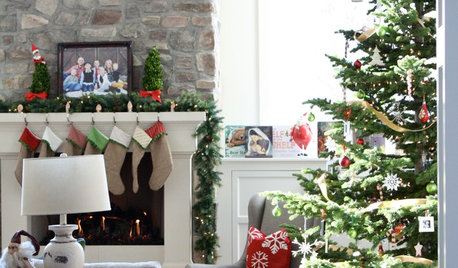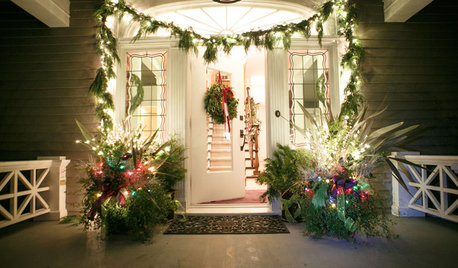Based on advice I received here over the past several months, I placed orders for about 700 seedlings for the first stage of my small reforestation project. The seedlings should arrive in mid-February (list below). I have a few questions about spacing, nursery trees, which trees grow best together, which do not, and what I may have forgotten. Most of the seedlings are for conifers and hardwood trees - I need broadleaf evergreens and understory trees but they may have to wait until next year.
Here is the list, followed by questions, and the preliminary plan:
CONIFERS
100 LLP (containerized)- single species groves; plant 8 x 8 or 9 x 8
150 - Bald cypress - single species groves; plant with Atlantic white cedar maybe oaks; can plant 6 x 8
100 - Loblolly pine, 2nd gen VA - single species groves; nurse tree between oaks
50 - Atlantic white cedar (containerized)- in wetlands area, to screen neighbors' sheds, interplant with bald cypress and some oaks; plant 6 x 8??
HARDWOODS
* Oaks - plant in blocks, 12 x 12 or 10 x 10?? Use nurse trees (black locust & loblollies) (oak - nurse tree - oak). Any reason why the different oaks should not be mixed when planted?
50 Swamp chestnut oak (Q. michauxii)
50 Nuttall oak (Q. nuttalli)
50 Cherrybark oak (Q. falcata v. pagodafolia)
50 Southern red oak (Q. falcata)
* Other hardwoods
50 Black locust (Robinia pseudoacacia) - grows fast, nurse tree
50 Wild Black cherry (Prunis serotina) - grows fast, good for wildlife
50 Black gum (Nyssa sylvatica) - medium growth rate
20 Swamp Tupelo (Nyssa sylvatica var.biflora) - small tree (approx 30'), wet swampy areas
10 Thornless honeylocust (Gleditsia triacanthos) - grows fast, possible disease problems so they are an experiment
Note: I can transplant red maple, sweetgum & sassafras seedlings from the adjacent forest; they will probably naturalize here too. I did not order hickories but decided to follow advice received here and start them from seed next year.
* Flowering trees (riparian or understory)
25 Native Dogwood
25 Washington Hawthorn
20 Dogwood, Red Osier
10 Dogwood, pagoda
10 Dogwood, grey
A few questions:
* Nurse trees & Spacing
The plan is to plant the conifers and hardwoods in blocks. The oaks will be planted with black locusts and loblollies as nurse trees.
One article said while black locust can serve as an early successional nurse tree, it "should be limited to 25% of the mixture to prevent over-dominance that would discourage growth of climax tree species and hinder species diversity."
In light of this, do you have any suggestions about other species that would be suitable nurse trees or shrubs for the oaks?
* Atlantic white cedar
I read articles that reported high mortality rates of Atlantic white cedar from herbivores. If this is true here, would they may be good candidates for tree shelters? Or should I plant more seedlings, or plan to replace the casualties next year, recognizing that I don't know what the mortality rate will be? I would prefer to avoid buying tree shelters because of the labor and expense.
Is it okay to interplant Atlantic white cedar with bald cypresses? What about interplanting Atlantic white cedar, bald cypress, swamp tupelo, Nuttall oaks, and Swamp Chestnut oaks? Or should the oaks be kept separate?
* What to plant together / and what NOT to plant together
I ordered 50 seedlings of four oaks this year. Is there any reason not to mix the seedlings up when planting them in blocks? Should oaks always be planted 12 x 12 or 10 x 10? Why?
I went a little little overboard with the bald cypresses. The Virginia nursery was out, so I panicked and ordered 50 from Texas. The next day, I found 100 2-0 seedlings from the NC nursery for $40 - my good judgment vanished and I'm expecting 150 bald cypress seedlings. BUT - I won't know if NC can fill the order for a while. Also, there is a freshwater pond that runs about 450 feet along one side of the property. On the other side of the pond are the backs of cottages and sheds. I want to screen the views of the cottage/sheds. We own the land on the other side of the pond so I can plant trees and shrubs on that side but I'd prefer that this not feel intrusive to the neighbors. Seedlings aren't intrusive although they are easy to run over with a lawn mower. I'd like to find some tall broadleaf evergreens for screening on this side of the pond.
I planned to plant the bald cypresses and Atlantic white cedars in single species groves and together. Is there any reason I should not include Swamp Tupelo, Nuttall oak and Swamp Basket oak with the bald cypresses and Atlantic white cedar? What about red maple? Sweetgum?
Any suggestions for modifications of this plan? What have I forgotten?
Many thanks for your help,
Pam












MissSherry
spruceman
Related Discussions
Companion shrubs
Q
ISO Best Oaks & Hickories for Southeast
Q
oak tree recomendations
Q
fascinating thread on Trees
Q
spruceman
MissSherry
wisconsitom
jqpublic
johnstaci
MissSherry
vancleaveterry
quercus_macrocarpa
PamchesbayOriginal Author
spruceman
MissSherry
Fledgeling_
MissSherry
PamchesbayOriginal Author
Fledgeling_
jqpublic
vancleaveterry
MissSherry
MissSherry
lou_spicewood_tx
spruceman
lou_spicewood_tx
spruceman
johnstaci
PamchesbayOriginal Author
PamchesbayOriginal Author
vancleaveterry
alabamatreehugger 8b SW Alabama
MissSherry
spruceman
brandon7 TN_zone7
spruceman
brandon7 TN_zone7
MissSherry
spruceman
quercus_macrocarpa
PamchesbayOriginal Author
MissSherry
PamchesbayOriginal Author